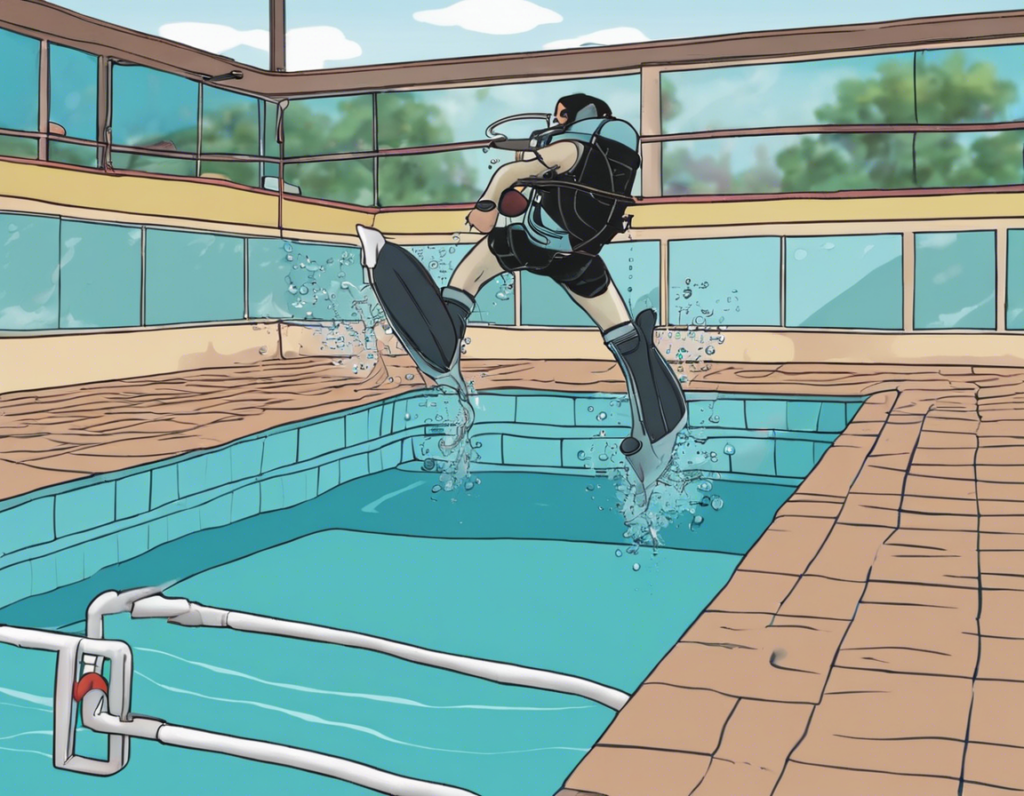Introduction
Fluid dynamics is a fascinating field that studies the behavior of liquids and gases when in motion. When it comes to understanding fluidity in action, one of the most visually captivating examples is watching a diver gracefully cut through water. In this article, we will delve into the physics behind a diver’s movements, exploring techniques and strategies utilized to minimize drag and maximize efficiency. By the end of this article, you will have a deeper appreciation for the fluid dynamics at play when a diver takes the plunge.
H2: Understanding Fluid Dynamics
To comprehend how a diver moves through water, it’s essential to grasp some fundamental principles of fluid dynamics. Fluid dynamics deals with the motion of fluids and the forces acting on them. When an object moves through a fluid like water, it experiences resistance, known as drag. Understanding drag is crucial for athletes like divers who aim to minimize it to enhance their performance.
H3: Types of Drag
There are primarily two types of drag that a diver encounters:
-
Pressure Drag: This type of drag arises from the pressure difference between the front and back of the object moving through the fluid. In a diving scenario, pressure drag can occur due to the diver’s body shape and positioning.
-
Skin Friction Drag: Skin friction drag is caused by the friction between the fluid and the surface of the object. Divers must streamline their bodies to reduce skin friction drag as much as possible.
H2: Techniques for Reducing Drag
Divers employ various techniques to minimize drag and move through water with efficiency and speed.
H3: Streamlining
One of the most critical techniques for reducing drag is streamlining. By aligning their bodies along the axis of motion, divers can minimize resistance and move through the water with less effort. This involves tucking in the head, straightening the arms, and keeping the body as narrow as possible.
H3: Kicking Technique
The kicking technique also plays a crucial role in reducing drag. Divers utilize a flutter kick or a dolphin kick to propel themselves forward while minimizing resistance. The key is to maintain a steady rhythm and avoid any unnecessary movements that could increase drag.
H3: Body Positioning
Proper body positioning is vital for reducing drag. By keeping the head down, the body straight, and the limbs streamlined, divers can cut through the water more effectively. Any deviations from the proper positioning can result in increased drag and slower propulsion.
H2: Maximizing Efficiency
In addition to reducing drag, divers also focus on maximizing their efficiency in the water. This involves optimizing their movements to generate maximum propulsion with minimal effort.
H3: Conserving Energy
Efficient divers understand the importance of conserving energy during their dives. By minimizing unnecessary movements and focusing on smooth, controlled actions, divers can swim longer distances and achieve better results.
H3: Breath Control
Breath control is another essential aspect of maximizing efficiency in diving. By regulating their breathing and timing their inhalations and exhalations, divers can maintain their buoyancy and reduce unnecessary disruptions in their movements.
H3: Visualizing Movements
Before executing a dive, skilled divers often visualize their movements. By mentally rehearsing their actions and imagining the perfect dive, they can prepare themselves for success and enhance their overall performance.
H2: Common Challenges and Solutions
Despite their skills and training, divers often face challenges in the water. Let’s explore some common issues and the solutions to overcome them:
H3: Buoyancy Control
Buoyancy control is crucial for divers to maintain their positioning in the water. By adjusting their weight distribution and lung volume, divers can achieve the ideal buoyancy level and move through the water with ease.
H3: Water Turbulence
Water turbulence can disrupt a diver’s movements and increase drag. To navigate through turbulent waters, divers can adjust their technique and body position to counteract the effects of turbulence and continue their dive smoothly.
H3: Equipment Malfunctions
In some cases, equipment malfunctions can pose challenges for divers. It’s essential for divers to undergo regular equipment checks and maintenance to prevent any unexpected issues underwater. Being prepared for potential malfunctions is key to ensuring a safe and successful dive.
H2: FAQs
Q1: How does a diver maintain balance in the water?
A: Divers maintain balance by adjusting their weight distribution and body positioning to achieve the ideal buoyancy level.
Q2: What role does streamline play in reducing drag for a diver?
A: Streamlining helps divers minimize resistance by aligning their bodies along the axis of motion, reducing pressure drag and skin friction drag.
Q3: Why is breath control important for divers?
A: Breath control helps divers regulate their buoyancy and maintain a steady rhythm during their dives, optimizing their efficiency in the water.
Q4: How can divers improve their kicking technique?
A: Divers can improve their kicking technique by practicing flutter kicks or dolphin kicks to propel themselves forward while minimizing drag.
Q5: What are some strategies for overcoming water turbulence during a dive?
A: To overcome water turbulence, divers can adjust their technique and body position, maintaining a steady course through turbulent waters.
Conclusion
In conclusion, the art of a diver cutting through water is a beautiful display of fluid dynamics in action. By mastering techniques to reduce drag, optimizing efficiency, and overcoming common challenges, divers can glide through the water with grace and speed. Next time you watch a diver take the plunge, appreciate the physics and skill involved in their seamless movements.
